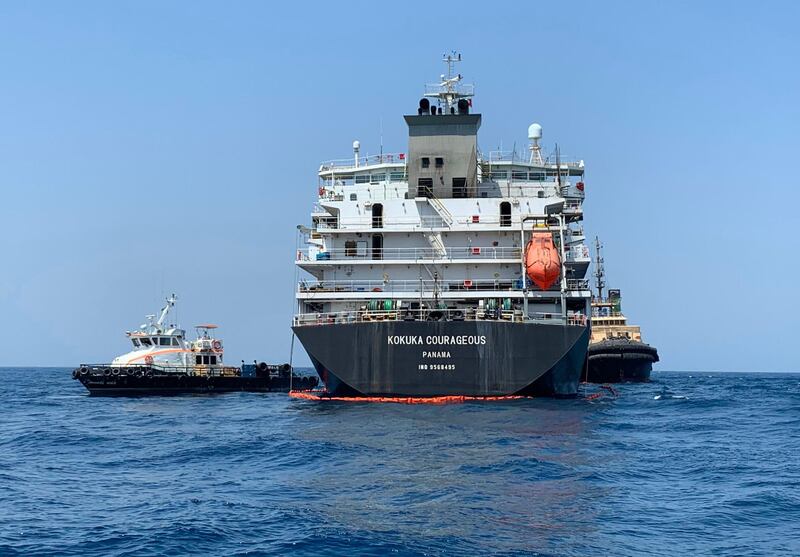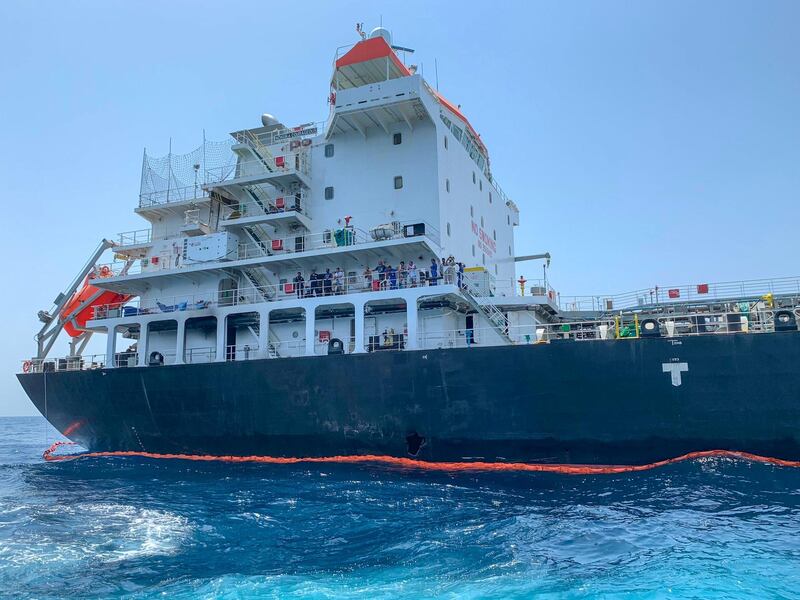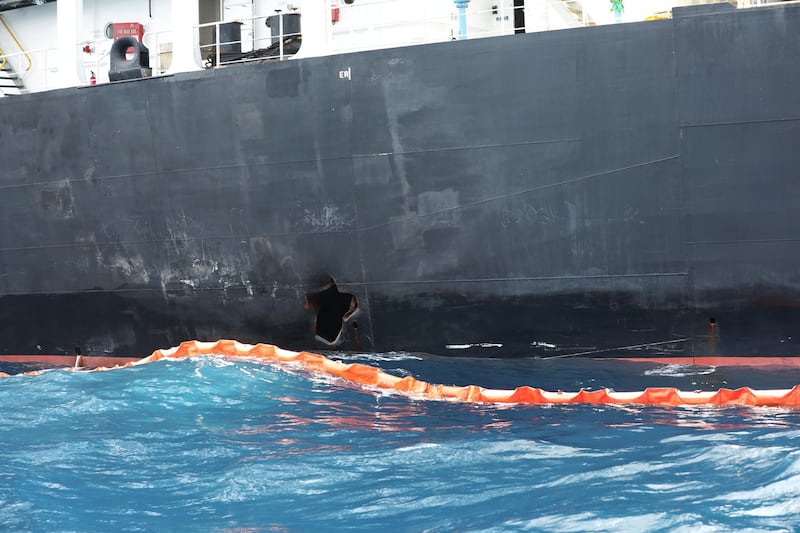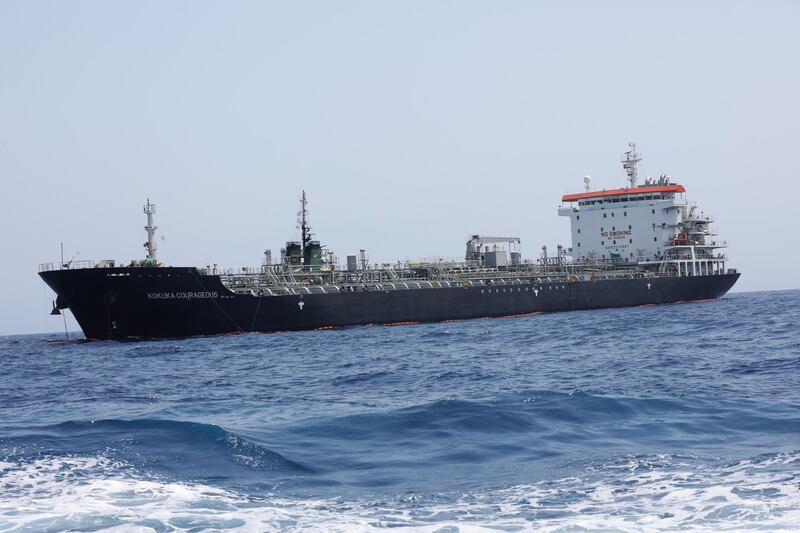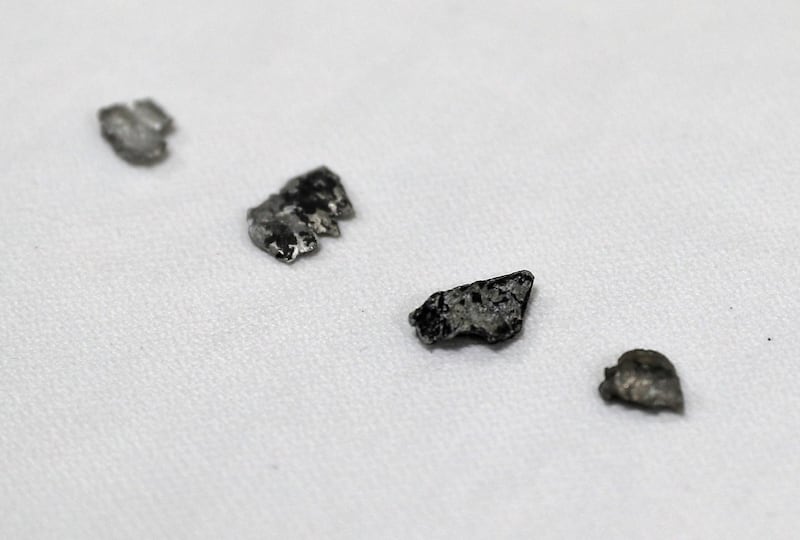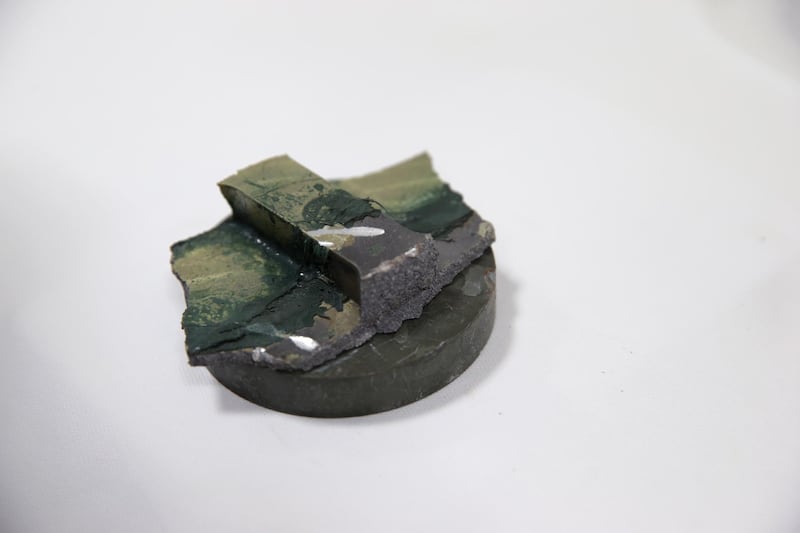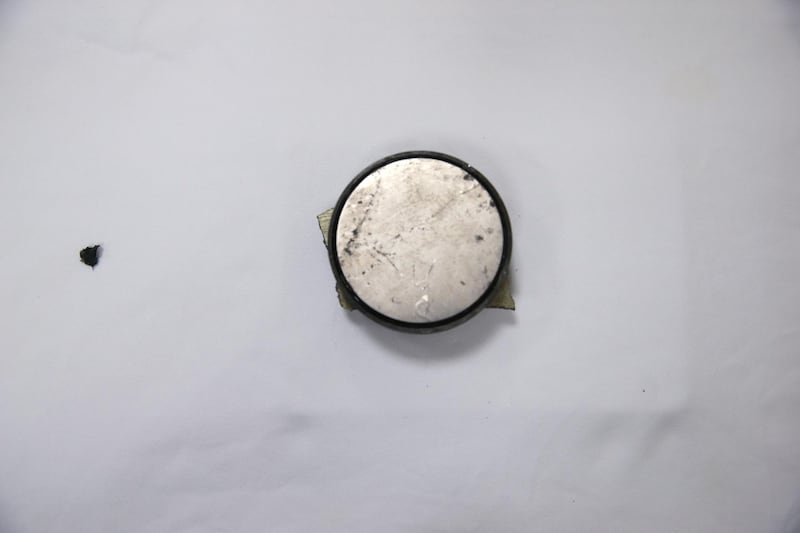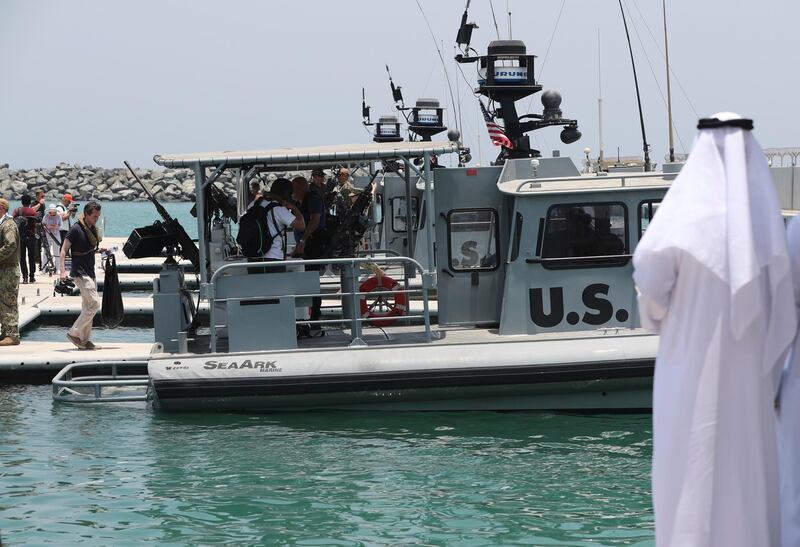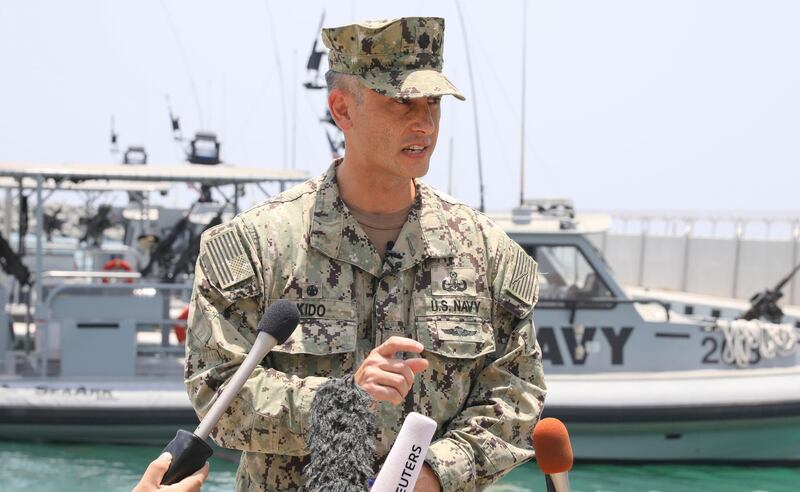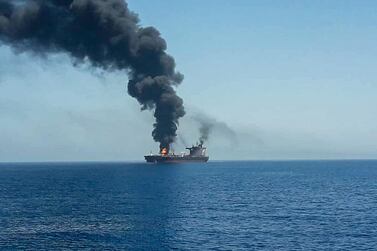Limpet mines used in an attack on a Japanese-owned oil tanker in the Gulf of Oman last week bear a "striking resemblance” to Iranian mines, US Navy officials said on Wednesday.
While Tehran has denied being behind the attacks, with Foreign Minister Mohammad Javad Zarif calling it suspicious, Cmdr Sean Kido of the US 5th Fleet said in Fujairah that the damage to Kokuka Courageous was "not consistent with an external flying object hitting the ship".
"The limpet mine that was used in the attack is distinguishable and also strikingly bearing a resemblance to Iranian mines that have already been publicly displayed in Iranian military parades," he said.
Small fragments said to have been removed from the Kokuka Courageous were on display alongside a magnet purportedly left by the Revolutionary Guard squad allegedly captured on video.
The Japanese company that owns the Kokuka Courageous had said its ship was damaged by two "flying objects", but NAVCENT dismissed this.
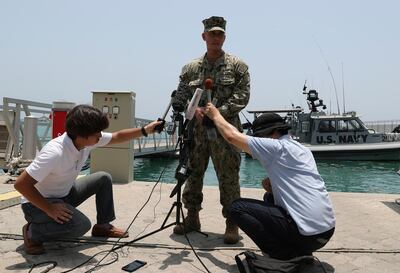
"The damage at the blast hole is consistent with a limpet mine attack, it is not consistent with an external flying object striking the ship," Cmdr Kido said, adding that nail holes visible in the hull indicated how the mine was attached to the ship's hull.
This comes days after the ship's owner said that the crew aboard reported seeing "flying objects" hit the ship on June 13 in the Gulf of Oman.
Cmdr Kido also told the press in the UAE port city that investigators had documented fingerprints and a handprint on the side of the vessel.
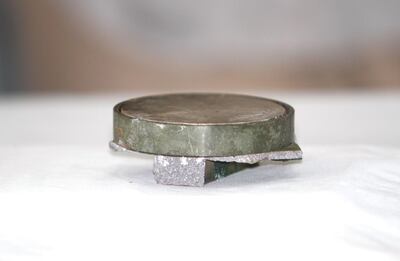
Last Thursday, the Japanese-flagged Kokuka Courageous and the Norwegian-owned Front Altair were attacked, causing damage to the vessels. Both have since been towed to UAE ports for inspection and assessment.
US officials have been clear that they blame Iran for the attacks and released grainy footage shortly after Thursday's incidents that, they say, shows Iranian Revolutionary Guards navy forces removing an unexploded mine from the side of the Kokuka Courageous. The footage has not been verified and it not clear what the object removed from the side of the ship was.
Military officials have also said that Iranian ships fired a Soviet-era low-to-medium altitude surface-to-air SA-6 missile at a Reaper drone that took the footage, although they have not provided any further detail or evidence of the claim.
Tensions have escalated between the US and Iran since President Donald Trump withdrew from the 2015 nuclear deal last year. The White House has piled on sanctions in an attempt to cripple the Iranian economy and bring its oil exports to zero.
Last month, four tankers off Fujairah were hit in a reported sabotage attack, the investigation results are still to be released while rockets were landed a short distance from the American embassy in Baghdad's Green Zone. Two Houthi drones also hit a Saudi oil pipeline in an attack that Riyadh says was directed by Tehran.
The incidents have fuelled tensions that broke out with the US pullout last year, followed by fresh US sanctions to stifle Tehran's vital oil trade, and a retaliatory Iranian threat this week to resume uranium enrichment in breach of the deal.
France and Germany said on Wednesday they would crank up efforts to halt any spiral towards conflict with Iran, but time was running out and the risk of war could not be ruled out.
Iran's signal of preparedness to stockpile enriched uranium beyond the deal's limit, and refine uranium to a fissile purity higher than deemed necessary for civilian uses, prompted Mr Trump to warn on Tuesday he was ready to take military action to stop Tehran developing a nuclear bomb.
Iran, where hardline foes of detente with the West have been strengthened by Mr Trump's pressure campaign, said on Wednesday it would give European powers no more time beyond July 8 to save the nuclear deal by shielding its economy from US sanctions.
President Hassan Rouhani said Iran's actions were the "minimum" Tehran could do one year after the United States withdrew from the deal, but said its steps were reversible "if they return to their commitments".
Iran has previously threatened to block the Strait of Hormuz in protest against US sanctions, in a move that would severely disrupt the movement of oil supplies around the world.
